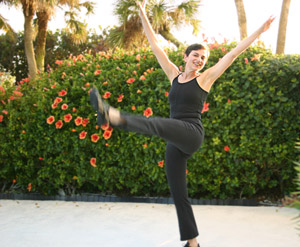 Loading... Please wait...
Loading... Please wait...- Home
- COACH
- Moving Free™
- SHOP
- CLUB
- ART
- FABULOSITY®
- BIO
- CONSULT
- AMAZON
-
Live Long
- Diet & Nutrition
- Easy Exercise Videos Mirabai Holland
- Fitness Longevity
- Fabulous Forever After 50 Mirabai Holland
- Senior Exercise Videos Mirabai Holland
- Baby Boomer Exercise Mirabai Holland
- Beginner Exercise Videos Mirabai Holland
- Moving Free
- Weight Loss
- Cardio
- Strength
- Flexibility
- Body Type
- Stress Reduction
- Medical Care
-
Health
- Exercise and Memory Issues
- Chronic Stress: How To Get Rid Of It
- Exercise & Heart Disease
- Exercise & Diabetes
- Exercise & Autoimmune Diseases
- Osteoporosis
- Exercise for Arthritis
- Back Pain
- Exercise & Orthopedic Issues
- Coping With Cancer
- Pulmonary Asthma
- Exercise And Parkinson's Disease
- Perimenopause & Menopause
- Exercise & Depression
- Sleep Better with Exercise
- BLOG
- Contact
Categories
Our Newsletter
Exercise & Diabetes

Getting regular exercise is key to preventing and managing diabetes. Exercise decreases insulin resistance and helps to metabolize sugar. It also helps circulation, which can be a problem for diabetics. Other benefits include having more stamina, stronger muscles and bones, burning calories and even elevating your mood. Click each picture below to learn about each



Here are some tips to help you get the best results out of your exercise program.
- Before starting anything new, check with your doctor to see what your normal blood sugar range should be and if there are any types of exercise you should avoid. For instance, weight training may be contraindicated if you have eye problems because it may raise blood pressure and rupture blood vessels in the eye.
 Test your blood sugar before and after exercising. Don’t start unless it’s in your normal range.
Test your blood sugar before and after exercising. Don’t start unless it’s in your normal range.- Activities that take you outside during hot or cold weather can affect blood sugar levels. If you find your levels are too low or too high, stop, and wait until they are in the appropriate range. Some diabetics find that exercise brings their blood sugar level too low (hypoglycemia). Some of the symptoms are sweating, anxiety, or feeling hungry. It’s important to always keep fruit juice handy just in case.
- Wear shoes and socks that are supportive and comfortable. Make sure you have enough room to wiggle your toes so as to not to stop circulation.
- Clothes like breathable cottons or micro fibers help wick away the sweat and keep you from overheating. In colder weather, dress in layers that you can peel off or put on as needed.
- Drink water before, during and after exercise. You may not even feel that thirsty but not getting enough fluids can affect your blood sugar level.
- Warm-up and cool-down at least five-ten minutes before and after exercise. Start your warm-up by doing low intensity movement like walking and end with it. Cool-down is a great time to stretch because your muscles are still warm.
 Exercise can increase quality of life for most diabetics and in many cases help keep the disease in check. Easy aerobics, easy strength or easy stretch exercise can help.
Exercise can increase quality of life for most diabetics and in many cases help keep the disease in check. Easy aerobics, easy strength or easy stretch exercise can help.
About Diabetes
People may be born with diabetes (Type 1), but most people who have it developed it after birth (Type 2). Overweight and obesity, a diet high in sugar and fat and low in vegetables, fruits, whole grains and beans and lack of regular exercise are major contributors to diabetes. Although Type 2 used to be diagnosed mostly in adults, it now is diagnosed frequently in children and teenagers.
According to the American Diabetes Association diabetes occurs when the body does not produce or properly use insulin. Insulin is a hormone that is needed to convert sugar, starches and other food into energy needed for daily life. Getting your blood glucose level tested as part of your annual checkup is important, particularly if you have pre-diabetes, a condition that occurs when a person's blood glucose levels are higher than normal but not high enough for a diagnosis of type 2 diabetes. There are 41 million Americans who have pre-diabetes, in addition to the 20.8 million with diabetes. Research shows that exercise decreases body fat and helps normalize insulin levels.



